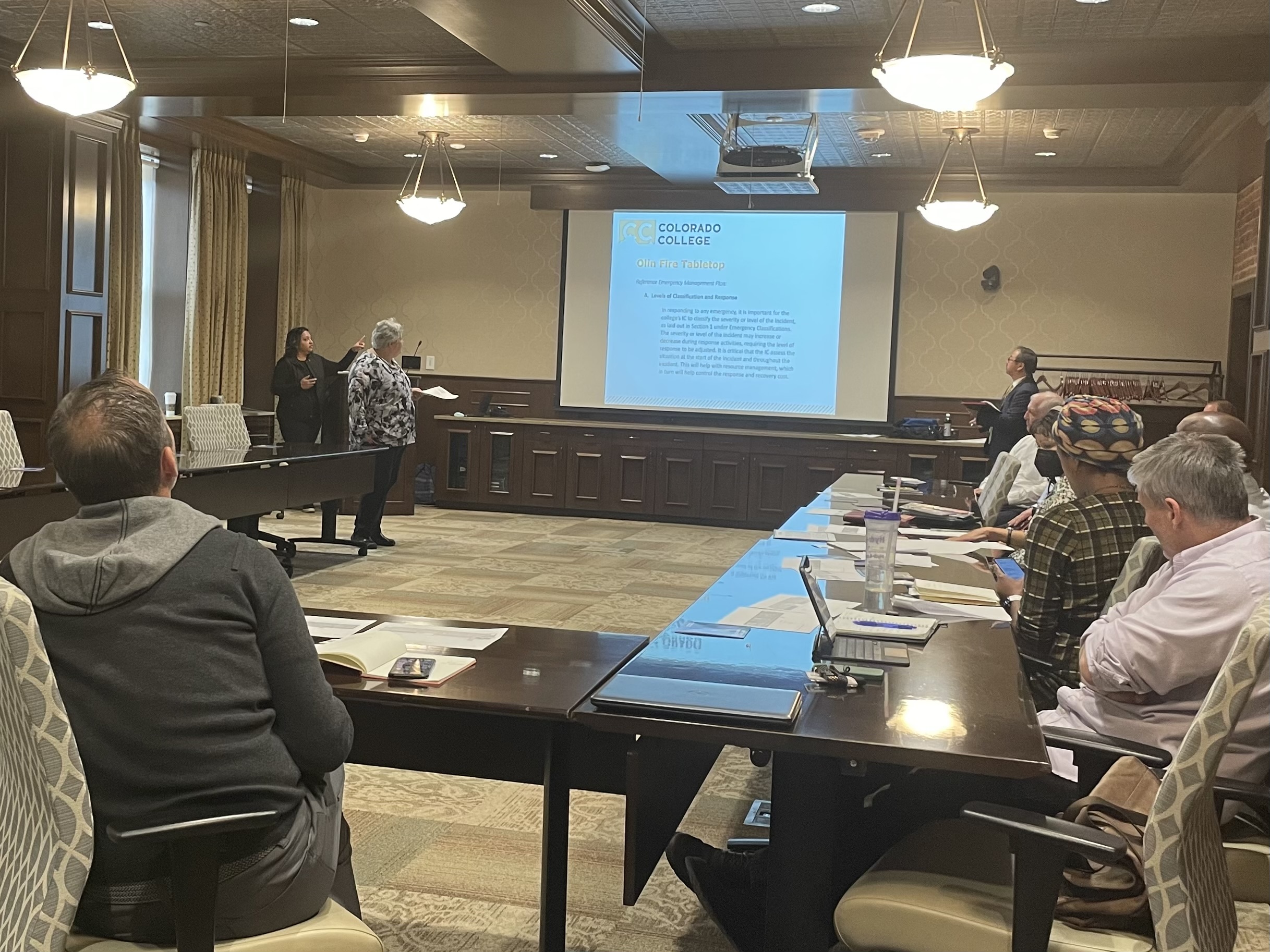Safety Liaison Program Overview
Colorado College is dedicated to providing a safe environment for all students, staff/faculty and visitors. The Office of Campus Safety & Emergency Management and the college’s Incident Management Team (IMT) initiated the Safety Liaison Program in 2018 to empower employees, from each academic and administrative building on campus, with the knowledge, skills and abilities required to help fellow building occupants. The Safety Liaison Program has been established to continue that commitment and provide crucial acts of service during an emergency. Safety Liaisons will partner with Campus Safety staff and other emergency response personnel to assist students, staff/faculty, and visitors in the procedures of an emergency for a safe evacuation, shelter-in-place or lock down. As a participant in the Safety Liaison Program, college employees voluntarily provide a valuable service to the college community should an emergency incident occur.
Safety Liaisons are never required to put their own safety in jeopardy or carry out any task that they cannot perform comfortably or safely.
Program Structure
Each academic and administrative facility will have an assigned number of Safety Liaisons based on the size and location of the building(s) and number of available volunteers. The Office of Campus Safety and Emergency Management will coordinate the Colorado College Safety Liaison program and provide access to seminars and trainings for liaisons, utilizing the Standard Response Protocol (SRP) messaging for uniform, planned and practiced response to any emergency incident.
Safety Liaison Qualifications
- Must be a full-time employee
- Must have supervisor approval and support
- Understands this is a 100% voluntary position
- Review the Colorado College Emergency Management Plan
- Review the Standard Response Protocol (SRP) messaging
- Must be willing to attend orientation and trainings
There is no additional compensation, beyond regular wages for one’s primary position, for serving as a Safety Liaison.
Overview
Responsibilities
A Safety Liaison is assigned a specific building or set of buildings or a specific floor or several floors within a specific building on campus.
- Assess building/floor situations during an emergency
- Report information to Campus Safety and other responders
- Follow IMT guidelines and procedures
- Assist with building/floor evacuations
- Assist with building/floor shelter-in-place procedures
- Assist with building/floor lock down procedures
- Be informed of building/floor occupants with disabilities
- Communicate with emergency responders
- Communicate with building/floor occupants
- Communicate with the campus safety staff
Primary Tasks
- Introduce yourself to individuals in your building/floor and identify yourself as the Safety Liaison, and provide them with a handout the explains your role
- Orient new employees on the emergency procedures for the building/floor
- Know the location of all the exits
- Know the locations of and how to activate the fire alarms
- Know the location of and how to operate a fire extinguisher
- Know the location of all stairwells
- Know locations of Automated External Defibrillator (AEDs)
- Learn all evacuation routes and designated evacuation areas
- Retain contact information of your fellow Safety Liaisons
- Know what hazards might be present in your building and identify ways to avoid those hazards during an evacuation (ex: construction projects, areas of chemical storage, etc.)
- Be familiar with the location of any individuals with accessibility or mobility needs in your area
- Be familiar with general building knowledge, including locations of mechanical rooms and utility shut offs
During An Emergency
Remain calm in the event of an emergency to assist others:
- Provide information and instructions
- If the situational response is to shelter in place or lock down, inform and reassure building/floor occupants
- If evacuation is recommended, ensure all building/floor occupants evacuate and assist them as needed
- Assess and report problems in your area
- Notify emergency responders of non-ambulatory individuals
- Report pertinent information to emergency responders on the scene
- Monitor check-in activities at evacuation sites
- Provide updates, as they become available, to occupants in your building/floor
- Keep evacuated persons out of the building until the "all clear" decision is announced
Orientation & Trainings
- Attend annual Safety Liaison Orientation
- Complete CPR and 1st Aid Certification Course, sign-up with Environmental Health & Safety
- Attend at least one Incident Management Team (IMT) meeting



